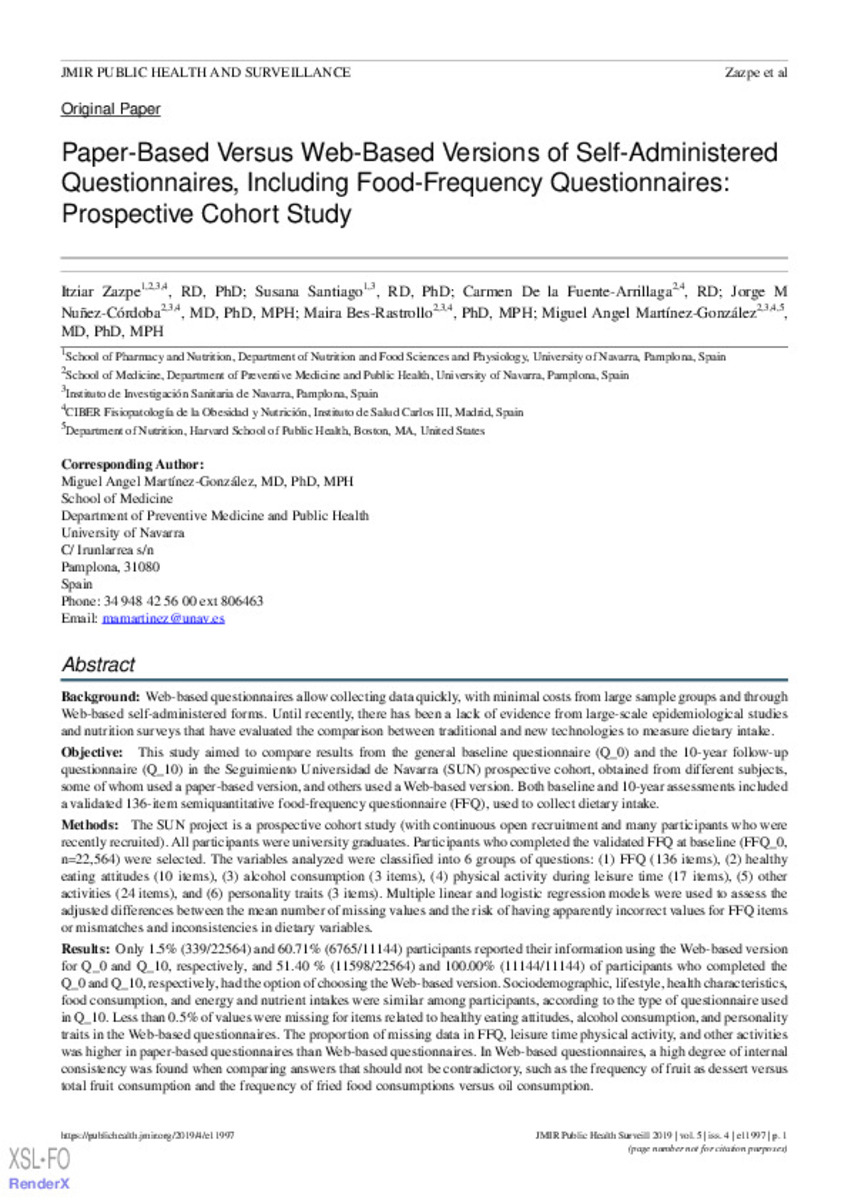Paper-based versus web-based versions of self-administered questionnaires, including food-frequency questionnaires: Prospective cohort study
Keywords:
Epidemiologic studies
Cohort studies
Surveys and questionnaires
Publisher:
JMIR Publications Inc.
Note:
This
is an open-access article distributed under the terms of the Creative Commons Attribution License
(https://creativecommons.org/licenses/by/4.0/), which permits unrestricted use, distribution, and reproduction in any medium,
provided the original work, first published in JMIR Public Health and Surveillance, is properly cited. The complete bibliographic
information, a link to the original publication on http://publichealth.jmir.org, as well as this copyright and license information
must be included.
Citation:
Zazpe, I. (Itziar); Santiago, S. (Susana); Fuente-Arrillaga, C. (Carmen) de la; et al. "Paper-based versus web-based versions of self-administered questionnaires, including food-frequency questionnaires: Prospective cohort study". JMIR Public Health and Surveillance. 5 (4), 2019, e11997
Statistics and impact
0 citas en

Items in Dadun are protected by copyright, with all rights reserved, unless otherwise indicated.








